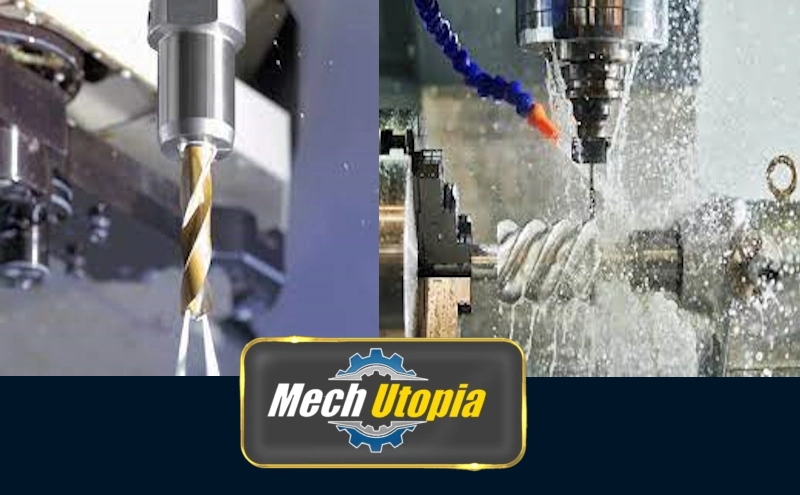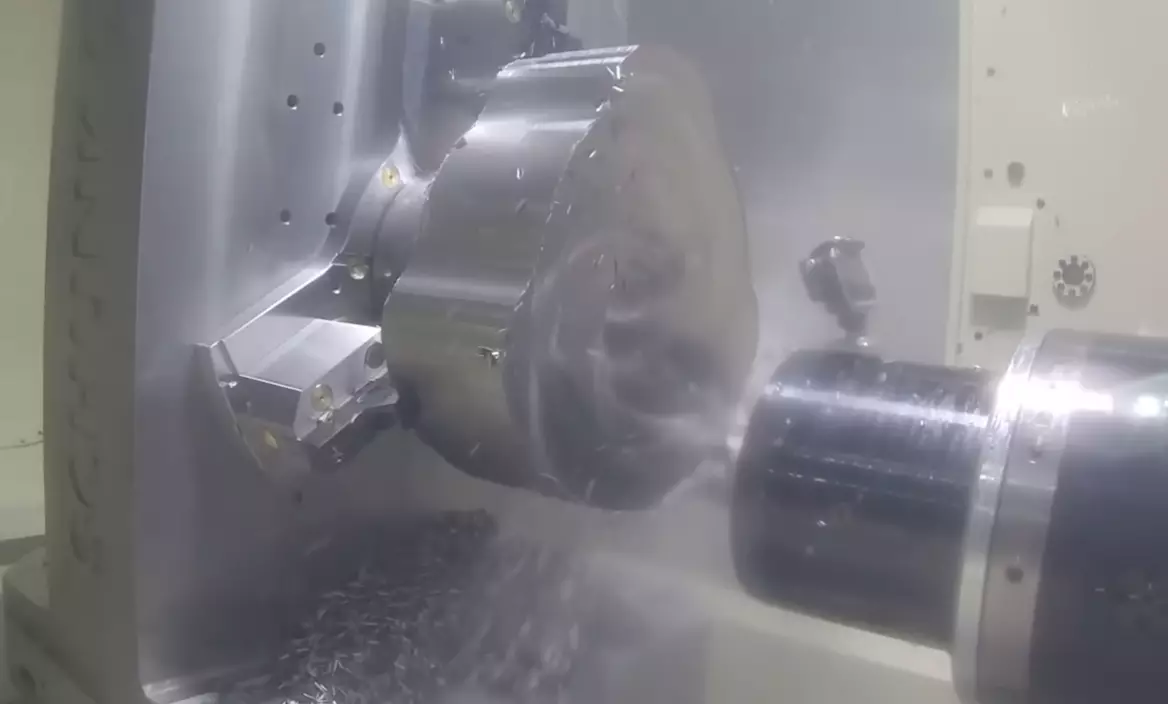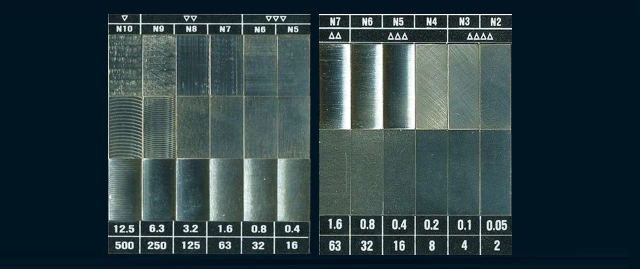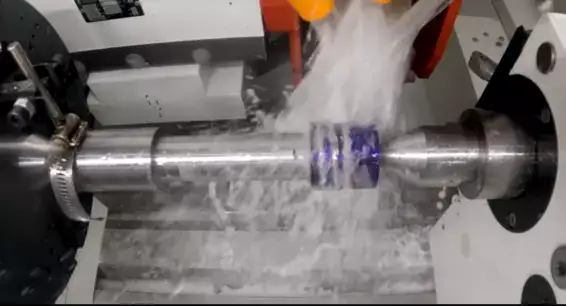Having a firm grasp of the role of coolants in CNC machining can significantly maximize the performance, durability, and efficiency of these complex machines. This understanding goes beyond just the basic knowledge that coolants dissipate heat generated during machining processes to prevent damaging the machine and the workpiece. Coolants carry out a host of functions, each of which plays directly into the overall outcome of the machining operation. From reducing friction to removing chips from the cutting zone, coolants are indispensable components of CNC machining. However, the selection of coolants and their effective management is equally impactful, shaping the results of machining operations.

Key Takeaways from this article:
- Essential Role of Coolants: Coolants dissipate heat, prevent machine damage, reduce friction, and remove chips, making them indispensable in CNC machining.
- Impact on Performance: Coolants ensure optimal machine performance, extend cutting tool lifespan, and maintain accuracy, especially during high-speed operations.
- Variety of Coolants: Not all coolants are the same. Their functionality varies based on type and composition, with oil-based and water-based coolants having distinct advantages and disadvantages.
- Influence on Tool Life & Productivity: Coolants reduce tool wear and breakages, leading to increased overall productivity.
- Surface Finish Enhancement: Coolants play a significant role in achieving smooth, polished CNC-machined parts, reducing the need for secondary finishing techniques.
- Factors for Coolant Selection: The choice of coolant is influenced by the material being machined, machine speed, cutting techniques, and the machining environment.
- Management & Maintenance: Effective coolant management is crucial for enhancing machine productivity, ensuring longevity, and contributing to cost-saving measures.
- Eco-friendly Options: The machining industry is gradually transitioning to biodegradable or ‘green’ coolants in response to environmental regulations and public health concerns.
Understanding The Essence of Coolants in CNC Machining
Unveiling the Impact and Role of Coolants in CNC Machining
The world of manufacturing has dramatically evolved over the past few decades, and a significant player in this change has been Computer Numerical Control (CNC) machining. A revolutionary approach that gives manufacturers precise control over their production processes, CNC machining relies on several factors for efficient operation, one of which is coolant.
The magnitude of coolants’ influence in CNC machining is undeniably paramount. Unitedly functioning with other elements, this irreplaceable component delivers outstanding performance, improved accuracy, and impressive longevity of the machine’s parts.
- Key Takeaways from this article:
- Unveiling the Impact and Role of Coolants in CNC Machining
- Coolant's Vital Function: Heat Reduction
- Coolant Type: The Fuel for Functionality
- Influencing Tool Life and Productivity
- Improving Surface Finish
- Parametric Influence on Optimizing Coolant Selection for CNC Machines
- What is the role of coolants in CNC machining?
- How do coolants influence the performance of CNC machines?
- Are all coolants the same?
- How do coolants impact tool life and productivity?
- What factors influence the selection of coolants for CNC machines?
- How are coolants managed and maintained in CNC machining?
Coolant’s Vital Function: Heat Reduction
CNC machining produces intense friction during operation as cutting tools interact with the material surface. This friction generates substantial heat, and failing to control these intense temperatures can lead to unwanted outcomes including tool wear, deformation, and imprecision.
That’s where coolants come into play. Serving as the knight in shining armor, coolants effectively draw away most of the heat generated during machining, ensuring optimal performance of the parts and extending the life span of cutting tools. Heat reduction is essential to maintaining accuracy, high speeds, and execution with minimal hitches.
Coolant Type: The Fuel for Functionality
Not all coolants work in the same way. Their functionality is massively dependent on the type and composition. For instance, oil-based coolants are excellent at heat reduction but can cause issues when creating a mist during high-speed operations. Alternatively, water-based coolants, while less optimal for heat reduction, prevent misting and are often more environmentally friendly.
Then there’s the role of additives, which further improve coolant traits based on the specific requirements of the CNC machining process. For example, if rust protection is needed, certain additives can offer that added layer of defense.
Influencing Tool Life and Productivity
Coolants’ influence goes beyond handling heat. They also increase the lifespan of tools and improve productivity. By reducing cutting tool friction, coolants reduce wear, breakages, and unexpected downtime, hence boosting overall productivity.

Improving Surface Finish
Ever wondered how CNC-machined parts achieve their smooth, polished surfaces? Beyond skilled craftsmanship, coolants also take center stage. They lubricate the cutting surface, minimizing the risk of jagged and irregular finishes. As a result, less time and resources are spent on secondary finishing techniques, making the manufacturing process more economical and efficient.

But, that’s just the tip of the iceberg!
In a nutshell, coolants are integral components that play a crucial role in the CNC machining process – dealing with heat dissipation, maintaining the sustainability of cutting tools, improving surface finish, and fostering overall productivity. Despite being a seemingly small component, it’s clear to see this underdog’s impact and functionality. Coolants – the unsung heroes of CNC machining! So, let’s give them the credit they so rightfully deserve.
Factors Influencing Selection of Coolants for CNC Machine
Parametric Influence on Optimizing Coolant Selection for CNC Machines
Defining the ideal coolant for any given CNC setup carries heightened significance in today’s machining industry. Going beyond a singular focus on the cooling and lubrication roles of coolants, it’s paramount to investigate the operational nuances pressed upon by specific parameters to ascertain optimum coolant selection.
One primary driver in the selection process is the type of material being machined. Different materials respond distinctively to different coolants due to their unique physical and chemical characteristics. For example, ferrous metals react well to water-soluble oils, while non-ferrous metals require a synthetic or semi-synthetic coolant for maximum effectiveness. Surrounding these defining materials, understanding parameters such as porosity, hardness, and chip-forming propensity becomes notably significant in coolant selection.
Meanwhile, machine feed rate and speed also command attention. High-speed applications necessitate coolants with outstanding heat-extraction capabilities, while slower-paced operations benefit from lubrication-focused coolants. It’s the balancing act between operational speed and the cooling versus lubricating characteristics that adds complexity to our coolant selection.
Different cutting techniques exhibit different requirements as well. Most operations involving heavy turning or milling generate large amounts of heat,
requiring coolants that prioritize heat reduction to prevent tool breakage. Conversely, operations involving light cuts or finish cuts generally benefit more from lubricating coolants, as less heat is produced.
The machining environment equally influences the coolant selection. In plants where worker exposure is high, chemical factors such as pH balance, low VOCs, and a non-aggressive smell come to the forefront. This introduces the concept of eco-friendly coolants, which are proliferating rapidly in response to stringent environmental regulations and public health concerns.
Finally, cost-effectiveness presents as a lasting consideration. Pitting initial expenditure against gains in tool life, quality, and overall machining efficiencies, enables us to decipher the actual value of any selection. Each scenario requires its own cost-benefit analysis, underlining the importance of this parameter.
In conclusion, stepping away from the ‘one-size-fits-all’ approach, the optimum selection of coolant for CNC machines is governed by a multitude of contextual parameters. Recognizing that each of these variables holds the potential to swing the efficiency pendulum significantly, should facilitate more focused and effective dialogue when it comes to perfecting the art of coolant selection in a CNC environment.
Types of Coolants for CNC Machining
Diving right into the contemporary scene of coolants used in CNC machining, we find a dynamic list of types each having its own unique set of characteristics. Highly prevalent across the CNC spectrum are oil-based coolants, synthetic coolants, and semi-synthetic coolants.
Oil-based coolants, known for their superior lubricating properties, are mainly employed in high-pressure systems. They can extend the tool life extensively and enhance the surface finish due to reduced friction between the tool and the workpiece. However, their downsides include lower cooling ability, more comprehensive cleanup requirements, and potential respiratory health concerns for operators due to the smoke produced during machining.
On the other hand, synthetic coolants, entirely devoid of mineral oil, offer higher cooling ability. Their high heat absorption rate, transparency, and non-staining properties make them excellent for machining tasks that demand precise measurement and produce high heat, like deep drilling or high-speed cutting. The downside, though, lies in less lubrication, potentially causing faster tool wear.
Meanwhile, semi-synthetic coolants bring together the best of both worlds. Formulated with a balance of mineral oil and synthetic materials, they offer moderately high cutting performance and a high degree of cooling capacity. Despite having a higher price point than the other options, they boast lesser smoke production and overall, longer sump life.

Let’s look at how coolant choice varies according to the material being machined. Tougher materials like stainless steel or superalloys often prefer oil-based coolants for their superior lubricating properties, while aluminum or brass often pair better with synthetic coolants for their cooling intensity and minimal staining characteristics.
Additionally, specific machining parameters like feed rate and speed call for different coolant types. High-speed operations that generate considerable heat necessitate synthetic coolants’ superior cooling ability. Conversely, lower-speed operations that struggle more with friction than heat might fare better with oil-based coolants.
Different cutting techniques also require varying types of coolants. For instance, a cutting process causing considerable chip formation might utilize a high-pressure coolant for chip evacuation, like a semi-synthetic coolant.
It’s essential to consider the impact of the machining environment, with aspects like operator safety and eco-friendly options playing decisive roles. For instance, attempts to transition to more biodegradable alternatives, or ‘green’ coolants, have gained momentum in recent times.
Lastly, cost-effectiveness factors in heavily when selecting a coolant. While initial costs for some coolants might seem steep, their impact on tool life, productivity, and maintenance costs should be considered for a more comprehensive understanding of the cumulative expenses.
In conclusion, no single type of coolant is suitable for all CNC operations. It’s a multiparameter decision that must consider an array of factors to ensure efficient, eco-friendly, and economically viable manufacturing.

